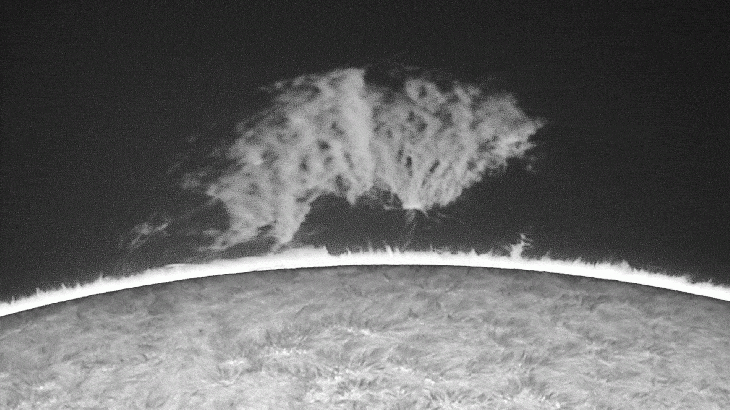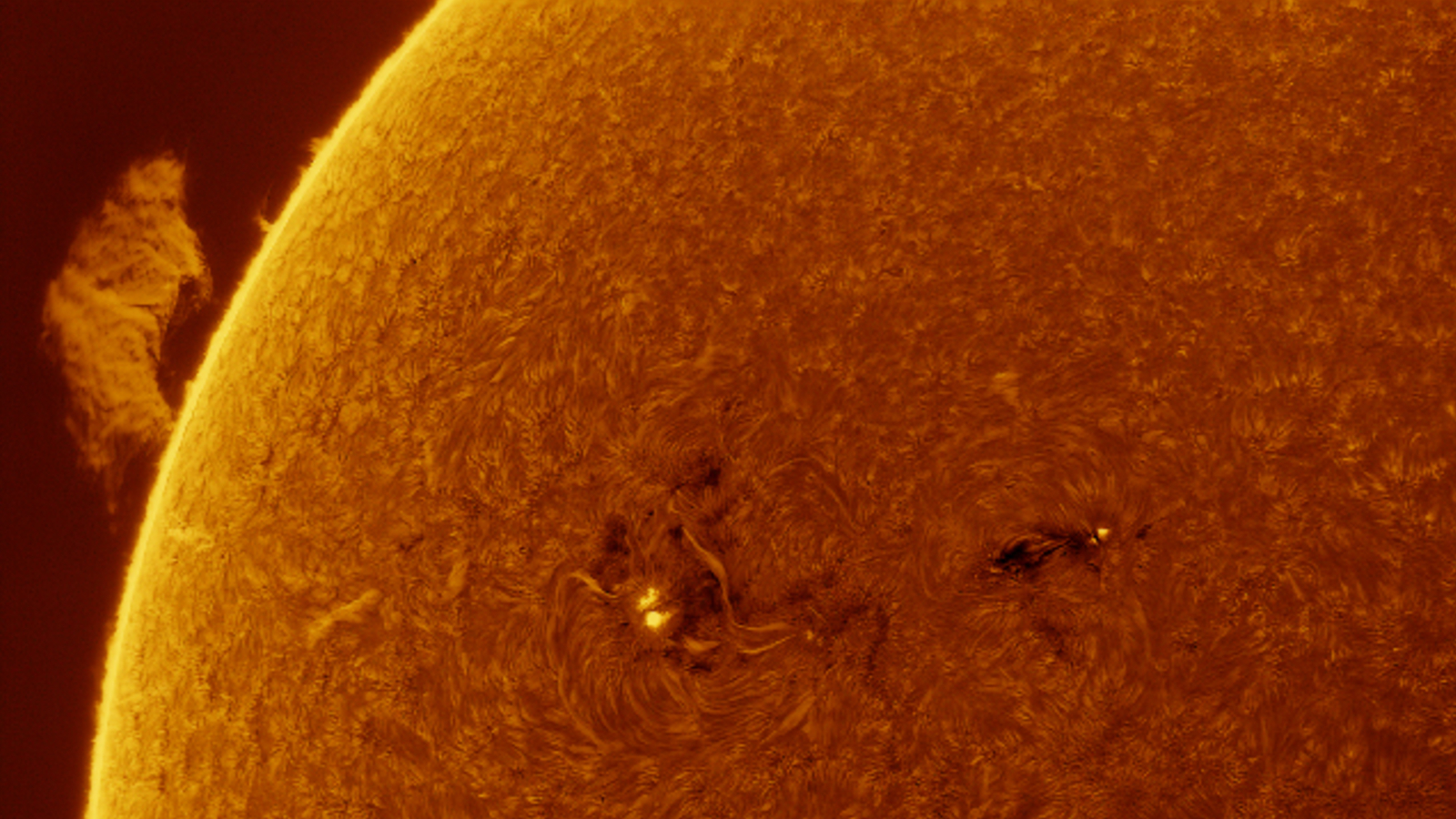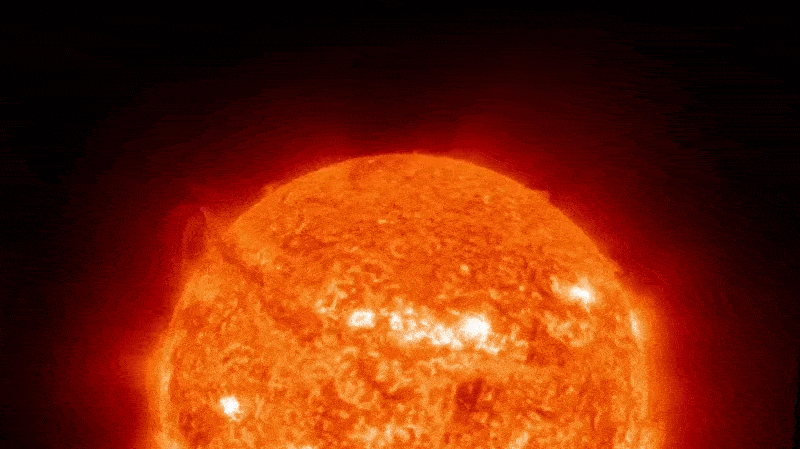Behold, 'The Beast': Gigantic animal-like plasma plume 13 times wider than Earth hovers over the sun
Astrophotographers have snapped stunning shots of a giant shapeshifting solar prominence, dubbed "The Beast," which appeared over the sun's northeastern limb on July 12 and rained impossibly fast fire over our home star.

A giant plasma plume dubbed "The Beast" was recently spotted dancing above the sun as it showered our home star with blobs of impossibly fast fire. The shapeshifting projection, which stretched more than 13 times wider than Earth, was the first of several sizable solar structures to emerge in recent days.
The animalistic mass appeared Saturday (July 12) over the northwestern limb of the sun, allowing photographers from around the world to snap some stunning shots, including Michael Jäger, who captured the plume from Martinsburg in Austria (see above); and Simon Metcalfe, who saw it from near his home in Gloucestershire, England (see below).
Astrophotographer Daid Wilson also captured an amazing movie of the entire event from Inverness in Scotland, revealing that the morphing plume stretched more than 100,000 miles (165,000 km) across.
The plume was at its peak size for around three hours and constantly changed shape during this time. "It looks to me like some huge 4-legged beast shuffling along," Wilson told Spaceweather.com.
This quote was picked up on several social media outlets, including Reddit and X, leading people to refer to the plume as "The Beast."
Related: 10 supercharged solar storms that blew us away in 2024

The Beast is a solar prominence — a "bright feature extending outward from the sun's surface," made from ionized gas, or plasma, that is held in place by invisible magnetic field lines anchored to the solar surface, according to NASA.
Get the world’s most fascinating discoveries delivered straight to your inbox.
These structures are usually small but can grow to be more than 1 million miles (1.6 million km) long and can be seen hovering around the sun's disk during eclipses, such as during the 2024 total solar eclipse over North America.
In the new images, smaller blobs of plasma can also be seen falling from The Beast toward the sun's surface. This is known as "coronal rain" and occurs when plasma cools and condenses, causing it to fall back to the sun's surface at extreme speeds as it travels along the invisible magnetic field lines.
The Solar Beast - 3 hours observation of a giant prominence on the northeast limb of the Sun (1500X speed) taken by David Wilson on July 12, 2025 pic.twitter.com/zeiUvmjtRtJuly 15, 2025
Prominences, which commonly form in a looped horseshoe shape, can also unleash solar storms, such as coronal mass ejections (CMEs), when the magnetic fields that hold them up snap like an overstretched elastic band, flinging the plasma off into space. If these solar storms collide with Earth's magnetic field, they can trigger geomagnetic disturbances, which can cause radio blackouts, satellite disruption and vibrant aurora displays. But in this case, no CME was released, meaning The Beast poses no threat to our planet.
Two more large prominences have also appeared on the sun in recent days: First, on Monday (July 14), and then again on Tuesday (July 15). Both of these structures were larger than The Beast, with a much more traditional shape, and unleashed CMEs. However, due to the angle from which they were released from the sun, neither of the solar storms will hit Earth, according to EarthSky.org.
The recent flurry of activity is a reminder that the sun is currently nearing the end of the most active phase in its roughly 11-year sunspot cycle, known as solar maximum. During this period, magnetic instabilities make it much easier for chunks of plasma to break away from the solar surface.


Harry is a U.K.-based senior staff writer at Live Science. He studied marine biology at the University of Exeter before training to become a journalist. He covers a wide range of topics including space exploration, planetary science, space weather, climate change, animal behavior and paleontology. His recent work on the solar maximum won "best space submission" at the 2024 Aerospace Media Awards and was shortlisted in the "top scoop" category at the NCTJ Awards for Excellence in 2023. He also writes Live Science's weekly Earth from space series.
You must confirm your public display name before commenting
Please logout and then login again, you will then be prompted to enter your display name.
